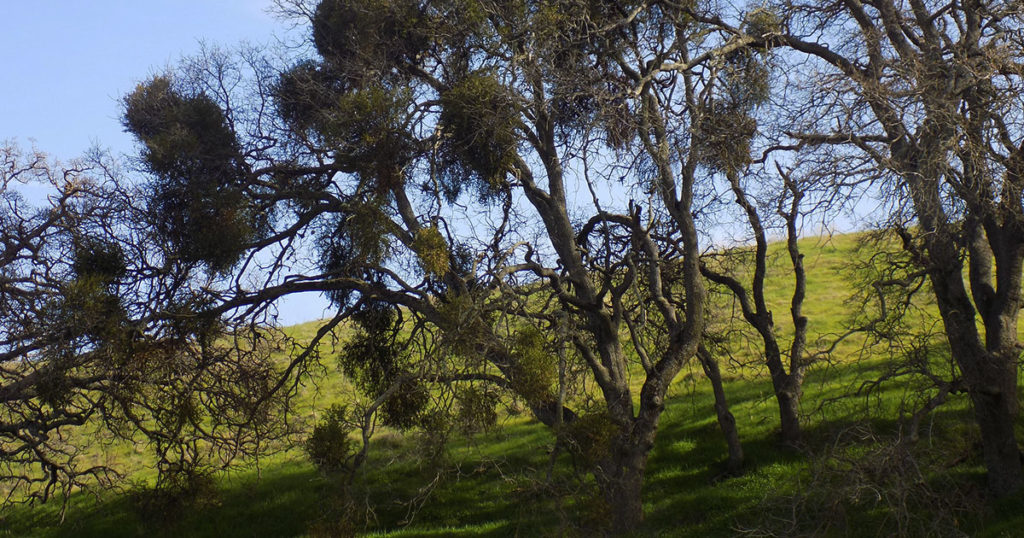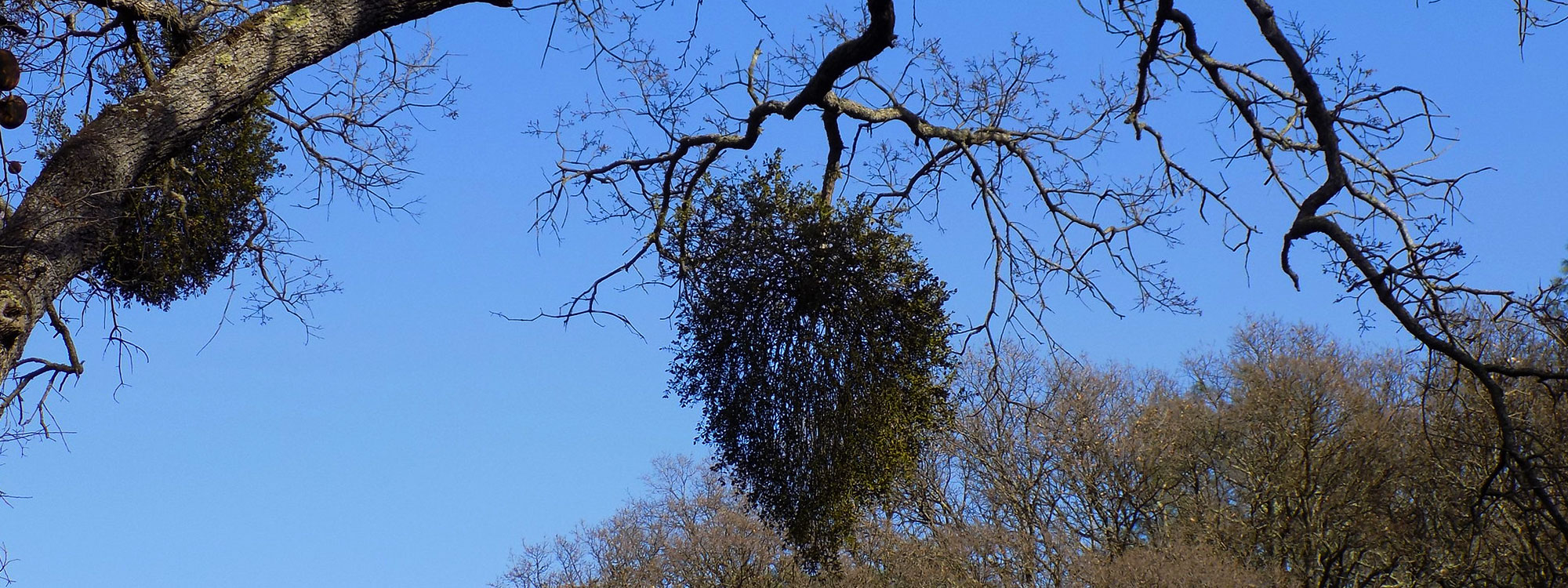Look up into the trees on your next walk through your neighborhood or nearby open space. If you are beneath an older, broadleaf tree, you might spot a strange growth in the canopy. That’s our Christmas favorite, mistletoe.
Mistletoe is a partial parasite on the host tree. The green color shows it contains chlorophyll and can photosynthesize to make its own food. But it can’t stick its roots in the ground. Instead, the roots (haustorium) penetrate cracks in tree limbs, where it steals water and minerals from its host.
Fun fact: the genus name, Phoradendron, means tree thief.
Mistletoe is certainly not good for the tree, though an otherwise healthy tree can stand mistletoe infestation for a long time. But mistletoe is very important in the web of nature. There are species of moths and butterflies that lay eggs on mistletoe and it serves as a host plant for caterpillars. Some birds, including the western bluebird, eat mistletoe berries.

But why do we kiss under mistletoe? You have to go back over a thousand years for an answer to that.
Druid tribes in ancient Britain worshipped oak trees. When the trees dropped their leaves in fall, the concerned druids were relieved to see that green mistletoe stayed on the tree, protecting the tree’s life force over winter (or so they thought at the time). The plant was soon attributed with magical and medicinal properties which, over time, evolved into kissing under the plant for good luck.
It just goes to show that even a parasite like mistletoe has an important role to play in nature and human folklore. But it’s best to resist the temptation to kiss under the mistletoe for now, unless you blow a kiss through your mask from at least six feet away.




